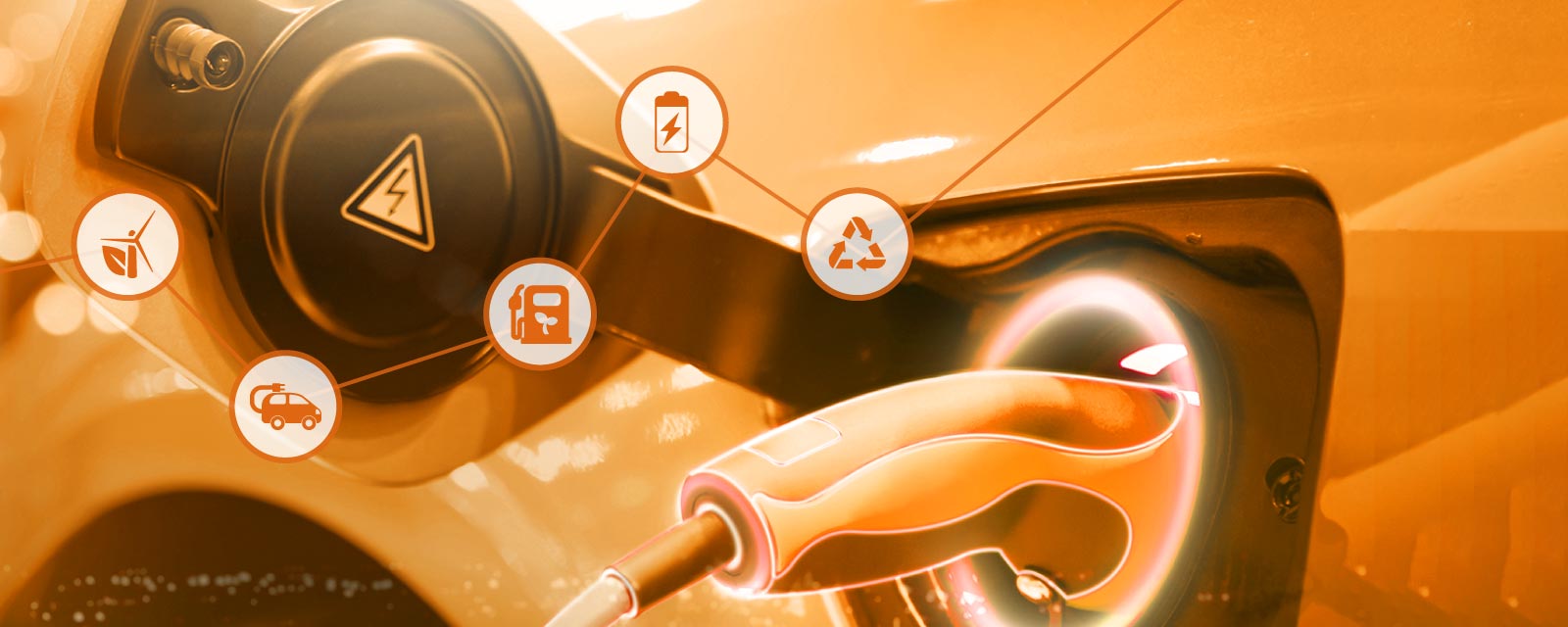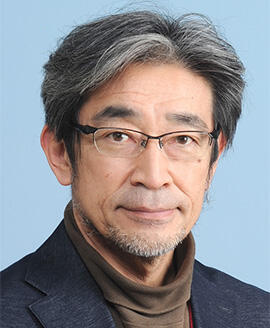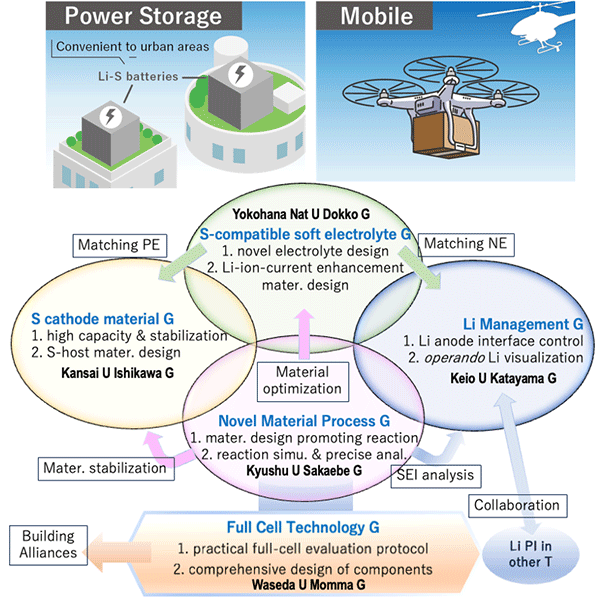R&D Projects
- JST TOP
- GteX
- R&D Areas
- Storage battery Area
- Development of lithium-sulfur batteries with low environmental impact and high performance


Project Leader

Group Leader
| KATAYAMA Yasushi | |
| SAKAEBE Hikari | |
| DOKKO Kaoru | |
| MOMMA Toshiyuki |
Summary
The aim is to develop a room-temp. operating lithium-sulfur (Li-S) battery that uses a soft electrolyte such as an ionic solution to achieve a long life and high energy density twice that of current LIBs. This battery is theoretically the lightest sealed battery available, and will enable power storage in various locations, such as on building rooftops and in homes. This will encourage the introduction of renewable electricity and contribute to the reduction of greenhouse gases. The cathode requires virtually no rare metals, and its low environmental impact during production is also attractive. In order to realize this battery, this team will promote the world's most advanced R&D through the following 5 groups (Gs): the 1st G to develop a cathode that can charge and discharge a large amount of S reversibly, the 2nd G to develop a soft electrolyte that allows Li to move rapidly, the 3rd G to improve the reversibility of a Li anode, the 4th G to clarify and promote the S reaction, and the 5th G to verify a demonstration battery. The world's most advanced R&D on Li-S is underway!

R&D Team
Kansai University, Yokohama National University, Keio University, Kyushu University, Waseda University, Hokkaido University, AIST, Niigata University, Japan Atomic Energy Agency, Kyoto University, University of Hyogo (listed in no particular order)
Affiliation and job title should automatically appear from the information that a researcher registered with researchmap.Data may be outdated or undocumented.
When there is not a connection via the internet, data are not displayed.




